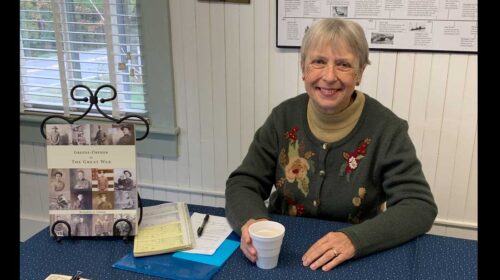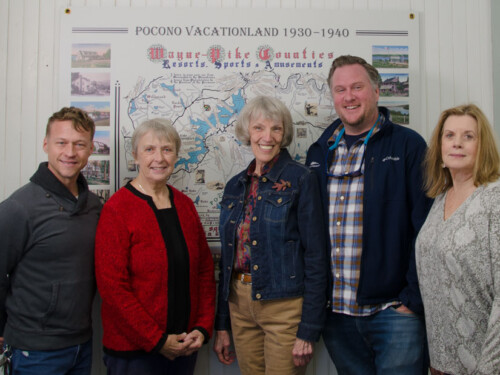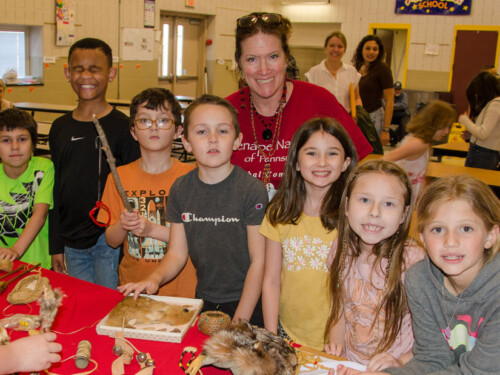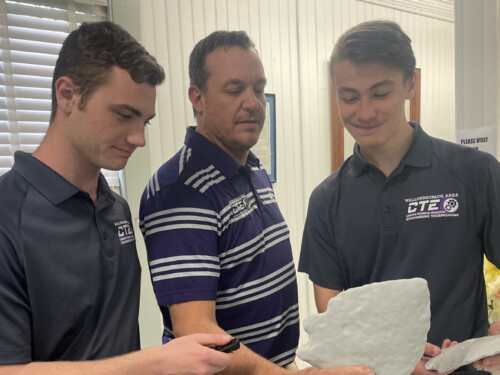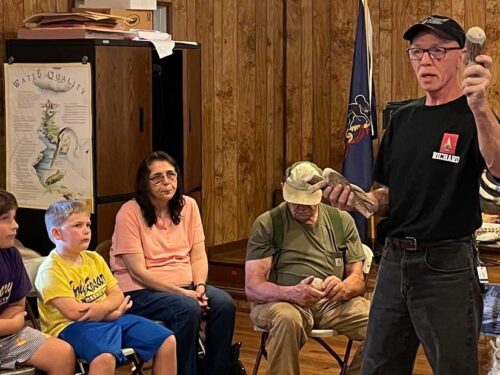Bethel School, a former one-room school in Berlin Township, held an open house and lecture on July 11 hosted by the Wayne County Historical Society. Every wooden school desk and recitation bench was occupied by those eager to learn something new when Bernadine Lennon, author of Greene-Dreher in the Great War, presented “The Army Within the Army.” Her talk focused on the volunteers and other unsung heroes that kept the American forces fighting during World War I.
“World War I was a war like no other,” explained Lennon. By the end of the massive, bloody conflict, 40 million military members and civilians had died. When America joined the fight in 1917, they needed to supplement their existing army. As the military draft swept through the nation, 30 training camps were built. However, these training camps were lacking in a few respects. There were no chapels, athletic facilities or libraries. Soldiers didn’t even have a place to buy stationery to write home to their loved ones.
“We did a very good job training the men militarily—how to fire a gun or a cannon or sail a ship—but all of the supporting things that a soldier or sailor needs, the morale aspect of it, was lacking,” she said. Organizations like the Red Cross and the YMCA stepped up to provide relief and welfare to the soldiers in training and in battle. The Knights of Columbus built recreation and entertainment centers, as well as chapels. They also provided 1,800 tons of stationary for the soldiers to write home. The Jewish Welfare Board ensured that kosher foods were available and that the training camps were staffed with rabbis. The Young Christian Women’s Association staffed Hostess Houses where soldiers could meet with their families, friends and spouses. The American Library Service built libraries and supplied soldiers with books, and the War Camp Community Service provided soldiers with social opportunities within the community.
Other much needed volunteers included a group of telephone operators known as “The Hello Girls.” In order to be accepted, a woman had to be single, have a college degree and be fluent in French and English. Three thousand women volunteered, but only 300 made the final cut. The work was more complicated than connecting wires in a telephone exchange. Encoded messages had to be translated from one language to another.
Lennon took time to highlight the interesting story of one local volunteer by the name of Charles Wesley Carlton. Carlton was born in 1886 in LaAnna, Greene Township. He attended Scranton Business School, where he later taught penmanship. After graduating from Syracuse University in 1916, he became the secretary of the city’s local chapter of the YMCA. He was later assigned to be a traveling secretary for the YMCA of New York City, where he raised funds for the war effort. He later found himself doing work for the same organization in France and Italy.
After the war, Carlton stayed in Italy until 1921, performing relief work. He was awarded the Italian War Cross for Merit and the Bronze Medal of the City of Rome for his efforts. He returned to Syracuse University where he remained for the rest of his life. Using his skills in penmanship and engraving, he created documents, certificates and testimonials for the university. He is buried in Oakwood Cemetery in Syracuse. His headstone is fittingly engraved in beautiful penmanship.
Lennon thanked the audience for their time and left them with the final words of her lecture: “It takes more than just an army to win.”
